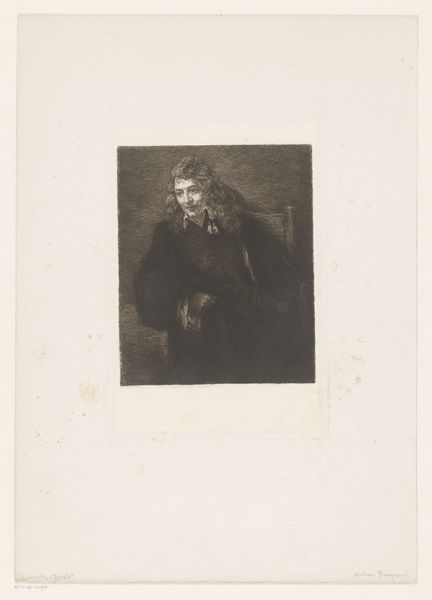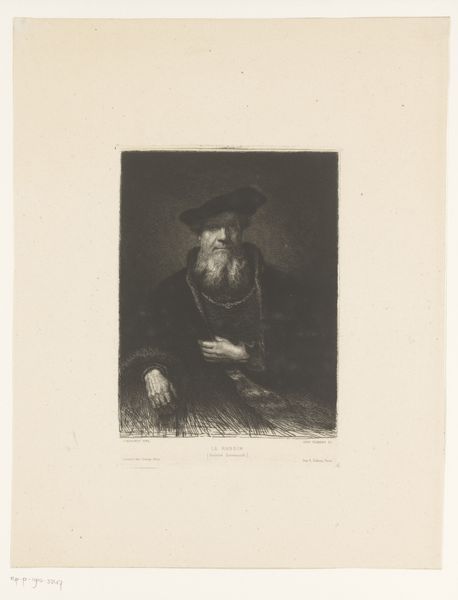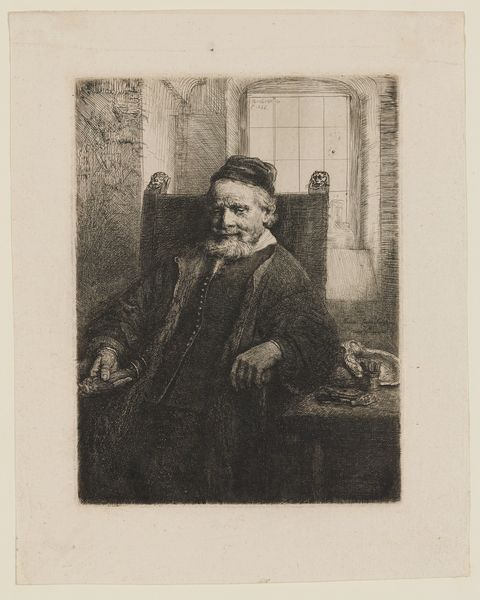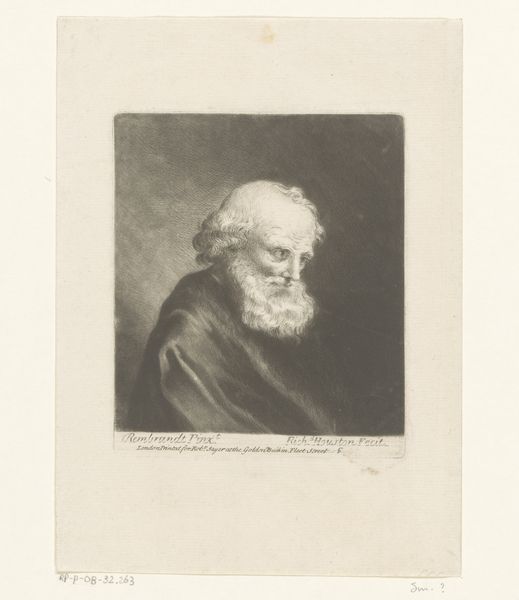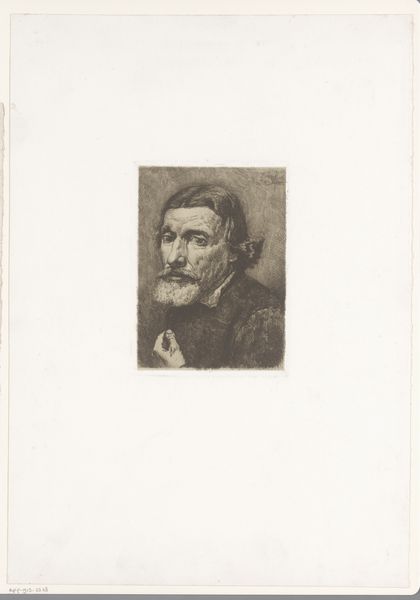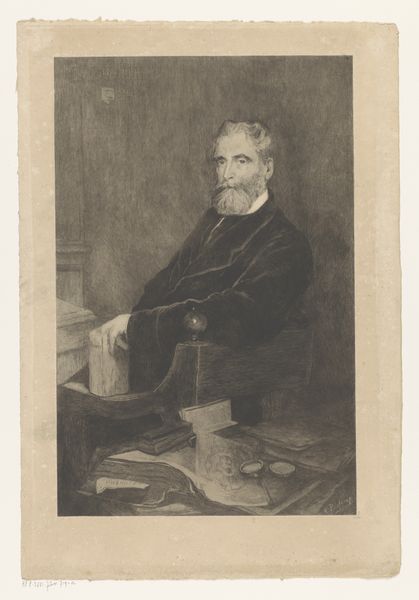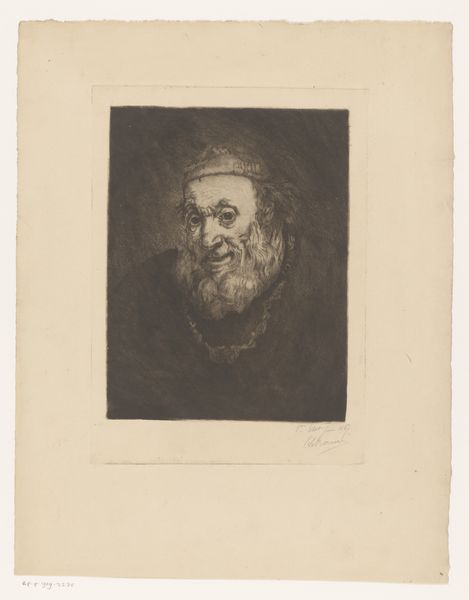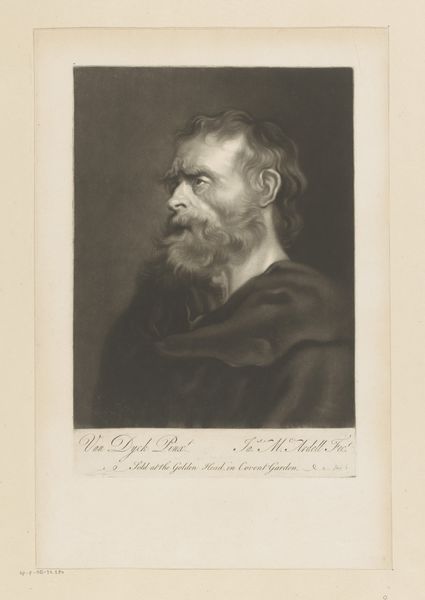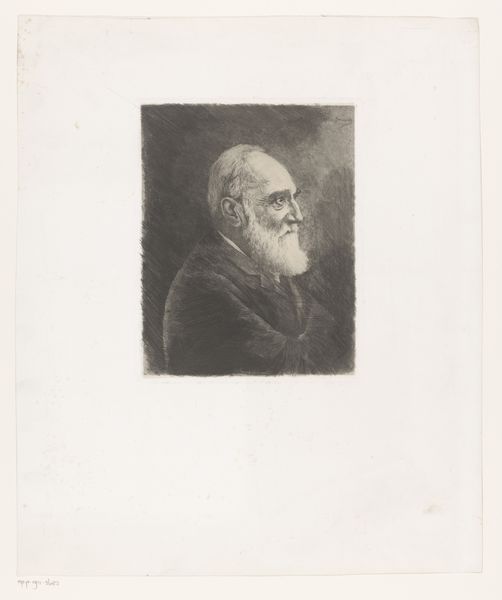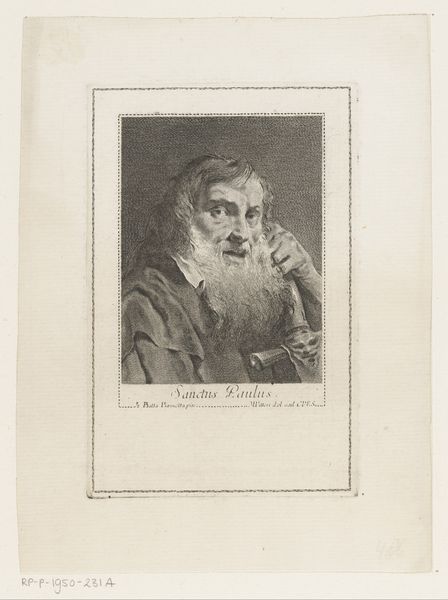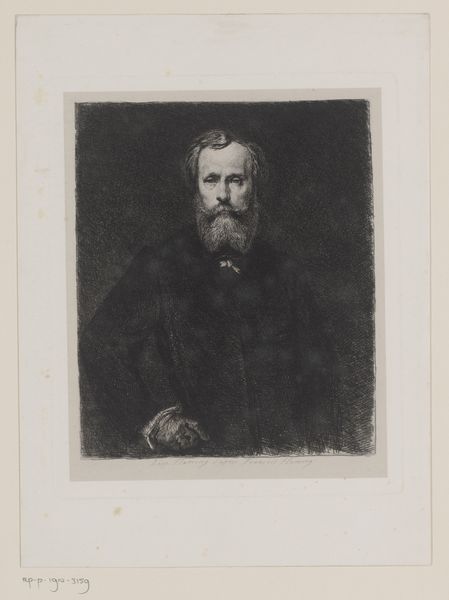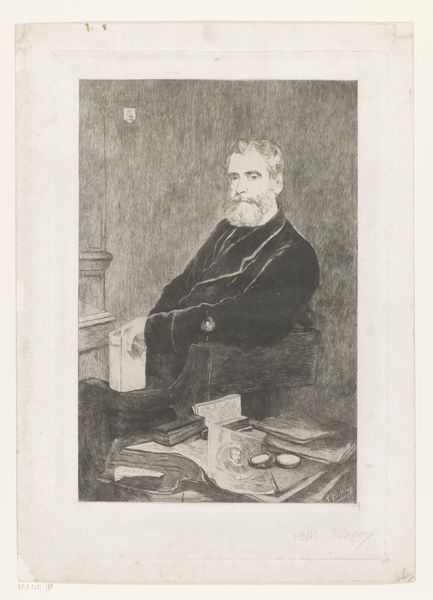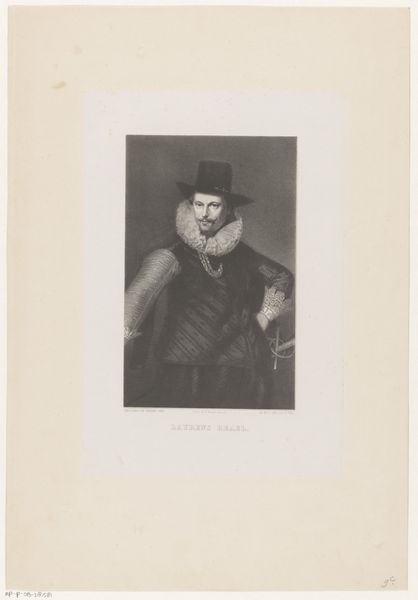
Dimensions: height 352 mm, width 241 mm
Copyright: Rijks Museum: Open Domain
Editor: Here we have a charcoal drawing from 1894, titled *Portret van een onbekende man,* attributed to Georges Montenez. It’s strikingly solemn, wouldn't you agree? What can you tell me about this imposing figure and his historical context? Curator: Indeed. This portrait resonates with the era's societal emphasis on masculine authority. Consider the intersection of class and gender in late 19th-century Europe. How does his formal attire – the high collar, the dark jacket – contribute to the construction of his identity and perhaps, his power? The charcoal medium lends itself to dramatic chiaroscuro, intensifying the visual impact of this self-assured man. Editor: So, are you suggesting that the very style of the portrait is designed to convey specific cultural ideas around men and masculinity? Curator: Precisely. Moreover, the "unknown" status prompts us to reflect on representation and power. Whose stories are told, and whose remain hidden? Could the anonymity challenge traditional portraiture that celebrates individual accomplishment, critiquing the elusiveness of objective historical narrative? Editor: I hadn't thought about it that way before, seeing the anonymity as a form of... resistance or questioning. It is almost like the drawing raises issues instead of settling them. Curator: Precisely, it makes us contemplate which figures throughout history have had their faces and names memorialized. It compels us to explore the unspoken politics embedded in such representations. This prompts a deeper understanding of not just art history, but its intersection with history, race, and gender studies. Editor: That's given me a lot to consider about how even seemingly straightforward portraits are connected to ideas around societal power. Thanks for clarifying this! Curator: My pleasure, every artwork presents a lens through which we understand society, even today.
Comments
No comments
Be the first to comment and join the conversation on the ultimate creative platform.
